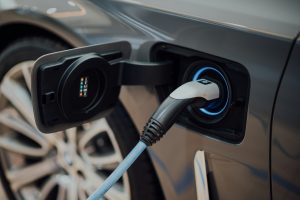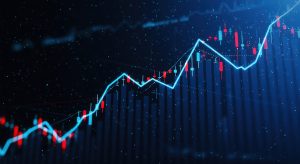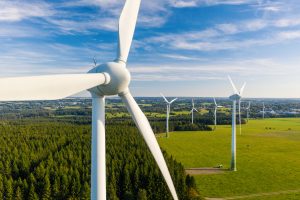The rising cost of inequality and what we can do about it as investors

The cost of inequality
Globally, the wealthiest 1% have taken home over £20 trillion in new wealth since 2020, nearly twice as much as the other 99% of the world’s population.[1] At the same time, at least 1.7 billion workers are living in countries where is outpacing wages, and roughly one in ten people globally are going hungry.[2]
For the first time in 25 years, extreme wealth and extreme poverty have increased simultaneously.
In 2016, the Joseph Rowntree Foundation estimated that the cost of poverty in the UK was approximately £78 billion. Nearly 40% of this cost came from healthcare (£29 billion), followed by schools (£10 billion), and police and criminal justice (£9 billion).[3] Since 2016, the UK has been through an exit from the European Union,[4] the global Covid-19 pandemic[5] and, presently, the energy and cost of living crisis.[6]
Between 2020 and 2021, approximately 20% of the UK population was living in poverty, amounting to over 13.4 million people.[7] Of these, 7.9 million were working age adults, 3.9 million were children and 1.7 million were pensioners. By 2021, the cost of child poverty alone in the UK was estimated at £38 billion a year.[8]
Even from this snapshot of inequality, it is clear that global wealth distribution is skewed, and inequality comes with a sizeable price tag.
You might also like: The influence of climate-induced inflation
Risks and opportunities
A growing body of knowledge and evidence shows a relationship between poverty and conflict.[9] Whilst poverty alone may not be a driver of conflict, it certainly is a contributing factor. In an increasingly resource-constrained world, and with worsening climate and ecosystem conditions, the impact on those already vulnerable will potentially increase the likelihood of conflict.[10]
As investors, these are the risks and opportunities that we must concern ourselves with. We can manage risk by redefining what we mean by growth in order to embed inclusivity. Equally, major opportunities come from re-evaluating how to best serve society in these challenging times.
But how do we design and invest in a more regenerative and distributive economy?
Interrogating the business models and looking into the tax policies of the companies we invest in are vital areas to research. The former allows an investor to understand how intentional that company is in pursuing a responsible management approach. The latter is a solid proxy for how aligned with the needs of broader stakeholders a company is and how aggressively it is pursuing a profit-above-all-else strategy.
Certifications and different approaches to governance that hold senior leadership accountable to a stakeholder-aligned approach present valuable opportunities for investors. One example of such certification is the
B Corporation (B Corp)
A method to assess inequality at the company level is looking at the ‘top floor to shop floor’ pay gap as well as the racial and gender pay gap. This involves comparing executive and worker compensation as well as those between genders and different ethnicities. Investigating relative pay is useful framing to analyse rising inequality in action, laying clear worker pay increases compared to corporate profits.
Another area an investor can look at is the ratio between inflation and the price increase of a company’s products. The pursuit of corporate profit can sometimes lie disguised, but in plain sight, in the narrative of critical inflation-based price hikes.[11]
You might also like: Investing in financials – sustainably
Solutions for investors
There are plenty of products and solutions that investors can look to alongside the core business practices and cultures of the companies they invest in.
- Microfinance is a tried and tested tool for economic empowerment, especially for women. A recent study has suggested that an increase in the availability of microfinance (as either a percentage of total gross domestic product (GDP) or the number of active borrowers per capita) correlates with reducing inequality at the country level.[12]
- Investing in universities ranked highly for social mobility is another way investors can help to address rising inequality. These investment opportunities are predominantly in the form of debt but provide clear and accessible options for investors wanting to address the rising level of inequality and the knowledge gap that so often accompanies it.
- Through digital inclusion, investors can support connectivity and access to services that many of the world’s poorest sorely lack. Digital infrastructure creates pathways for empowerment from economic (e.g., mobile payment services) to educational (e.g., online learning) and to health-related (e.g., rural and mobile healthcare provision), to name but a few.
- Energy and food security investments are two of our the most pressing urgencies. We know the worsening climate disproportionately affects the world’s poorest, as does rising food price insecurity.[13] Investments in clean energy and a more resilient and regenerative global food system provide various investment opportunities – from green energy infrastructure in low-income counties and communities to regenerative farming practices and financial support for smallholder farming.
You might also like: Investing in sustainable tech
Investing in tackling inequality is about future-proofing our social, environmental, and economic systems for the changes that are already happening. Left unattended, this situation will get worse, because, like any system, all parts are interconnected. It is this interdependency that allows investors to better understand and redress the imbalances in the system and, in turn, better serve society by reducing the rising cost of inequality for everyone.
[1] Survival of the Richest, Oxfam
[3] Counting the Cost of UK Poverty, Joseph Rowntree Foundation
[4] Brexit is costing the UK £100bna year in lost output, Bloomberg
[5] Covid-19 Cost Tracker, National Audit Office
[7] UK Poverty 2023: The essential guide to understanding poverty in the UK, Joseph Rowntree Foundation
[8] The Cost of Child Poverty in 2021, Donald Hirsch, Loughborough University
[9] Poverty and Conflict: Causal Factors ad Resolutions, Nuriyeni Kartika Bintarsari Agrum Tri Utami
[10] The Climate Crisis Disproportionately Hits the Poor, World Economic Forum
[11] Corporate Profits Drove up Prices Last Year, The Guardian
[12] Microfinance and income inequality: New macrolevel evidence, Maricruz Lacalle-Calderon, José Maria Larrú, Silvia Rico Garrido, Manuel Perez-Trujillo
[13] Food Security Update | World Bank Response to Rising Food Insecurity, World Bank





